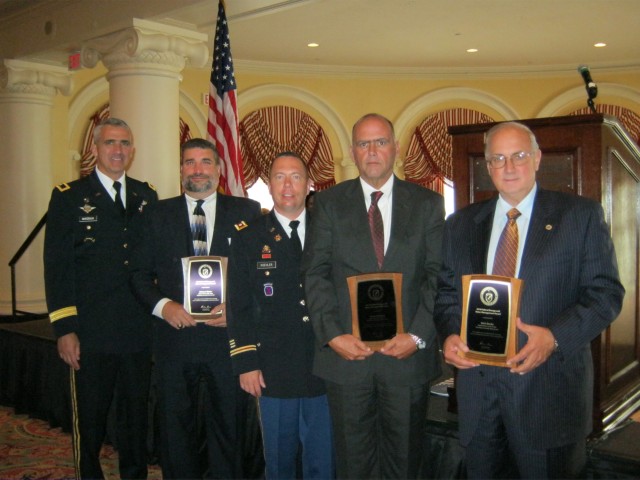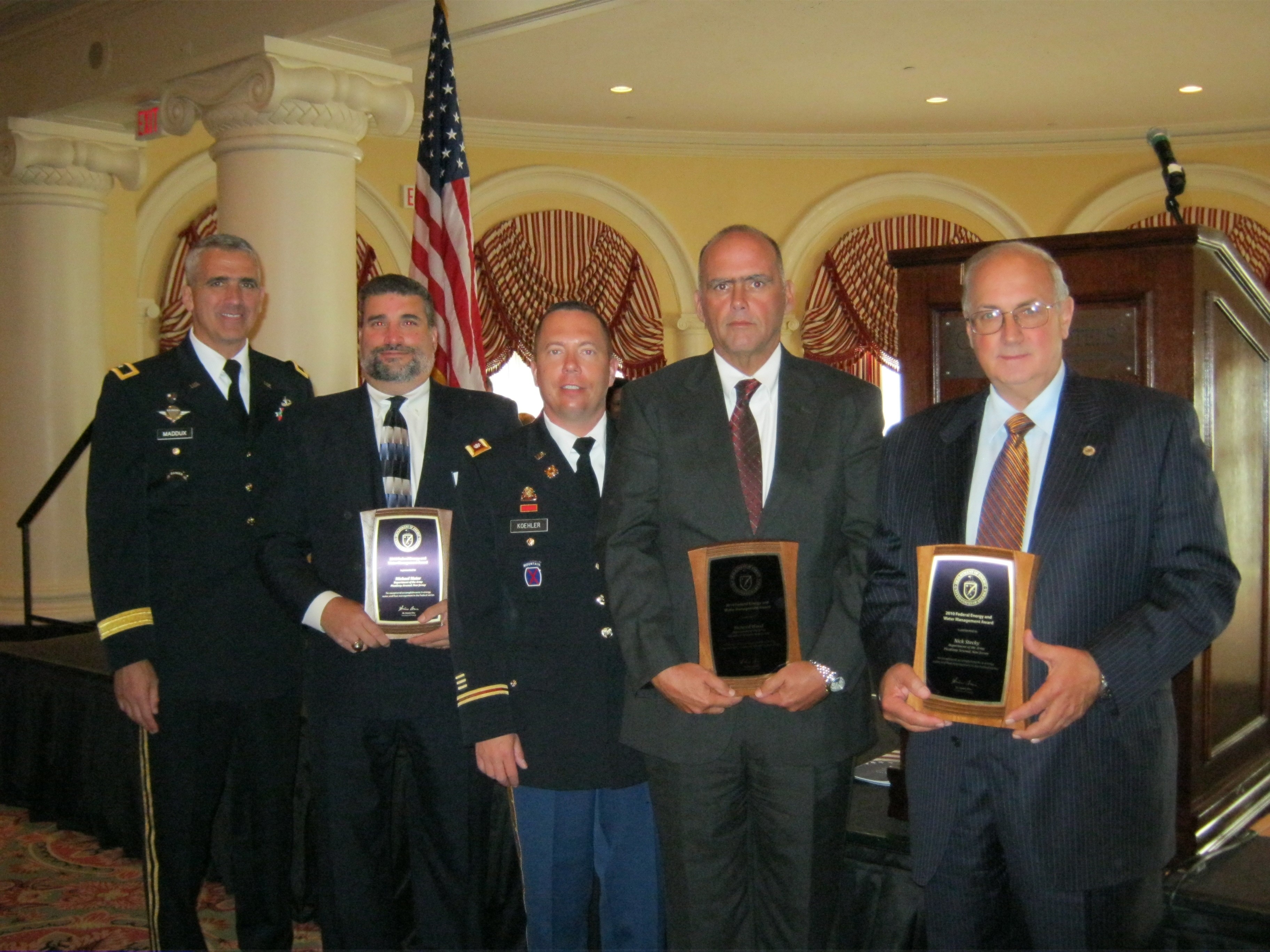PICATINNY ARSENAL, N.J. - I recently had the honor of standing by Picatinny Arsenal's Energy Management Team as it received the Federal Energy Management Program (FEMP) "Small Group" award on Oct. 7 in Washington, D.C.
The Federal Energy and Water Management Awards recognize individuals, groups, and agencies for their outstanding contributions in the areas of energy efficiency, water conservation, and the use of advanced and renewable energy technologies at federal facilities.
The Picatinny Department of Public Works employees recognized in this category were:
Mike Maier, Chief, Maintenance & Operations; Ed Brice and Rich Wood; the Construction Management Team; Tom Struble, Contracting Liaison; and Nick Stecky, Resource Efficiency Manager.
The Picatinny Arsenal Team was the only Army recipient of a FEMP award for Fiscal Year '09. In addition, Picatinny Arsenal also won the 32ndAnnual 2010 Secretary of Army Energy and Water Management Award, presented at the Army Energy Workshop in Dallas, Texas, in August.
This is the second year in a row that Team Picatinny has won both a Secretary of the Army and a FEMP award.
The team's mission was to develop a holistic, comprehensive plan to address energy, water, safety and environmental concerns. Projects completed under this approach included:
-- Conversion of two buildings from oil and propane to natural gas.
-- Installation of new boilers and eliminate steam distribution lines, which eliminated roughly 5,000 feet of steam line with associated losses.
-- Rebuild of service water pump station, installing high-efficiency pump motors with variable speed drives and high-efficiency filtration for sediment control.
-- Expansion of a post-wide energy management system to include heating and air conditioning controls for 13 buildings.
-- Upgrade of a steam system by installing boiler stack economizers and boiler wastewater, called "blowdown," heat recovery units at the two boiler plants.
-- Installation of a filtration system and converted the two boiler plants from potable water use to service water.
Although the individual energy and water saving measures stand alone as good projects, it is the holistic integration of some measures that magnifies the effect. This is especially true of the steam plant upgrades.
These steam plants serve space-heating and process-related loads. Space-heating demand is limited to the winter season, but the process loads occur the entire year.
This plant uses 100 percent makeup water, as it has no condensate return due to process uses and long distances to the loads. Condensate returns were analyzed and found to be a poor payback.
Operational issues included very hard potable water, frequent backwashes of the boiler water softener system, the need for quenching boiler blowdown, scaling of sewage piping due to high water hardness and lack of adequate service water.
In addition, the onsite potable water plant was operating near its maximum output of one million gallons per day, and a capital expansion was under consideration. The boiler plant used an average of 200,000 GPD of potable water.
The Water and Energy Team developed a strategy to replace the hard potable water uses with much softer service water and an energy-savings plan using heat-recovery techniques. When the service water plant was upgraded, soft service water displaced the hard potable water. This change also reduced the workload on the water softening system, the backwashes and treatment chemicals use.
A boiler blowdown heat recovery system was installed to preheat the makeup water before sending the wastewater to the sewer. This process also reduces the blowdown's high temperature, which means it no longer needs the hard potable water previously used as quench water that fouled the sewer piping with scale. Quench water has almost been eliminated, while sewer piping scaling has been eliminated.
Only 60,000 gallons per day (GPD) of service water are now needed, as opposed to the previous requirement of 200,000 GPD of potable water. In addition, the boiler stack economizers that preheat the boiler makeup water save energy and reduce boiler exhaust stack temperatures.
This holistic approach reduces energy consumption green house gases, potable water use and chemical treatment use. It also saves money, avoids potable water plant expansion, preserves the long-term sustainability of the potable water well aquifer and reduces sewage flow rate by 140,000 GPD.
In addition, energy cost savings in the form of "avoided costs" is about $1 million a year.
Let's continue to be leaders in the Army and federal programs for energy efficiency and water conservation.
The 2010 Energy Awareness Month theme is POWERING AMERICA: We're On Target...
We are expanding participation in our energy management team and seek volunteers and good ideas.
If you have an energy-saving idea, you can contact the team at picatinnyenergyefficiencyoffice@conus.army.mil. Let's keep our aim on the Energy Target!
Send your ideas to Nick Stecky, 973-724-6098, nick.stecky@us.army.mil.


Social Sharing